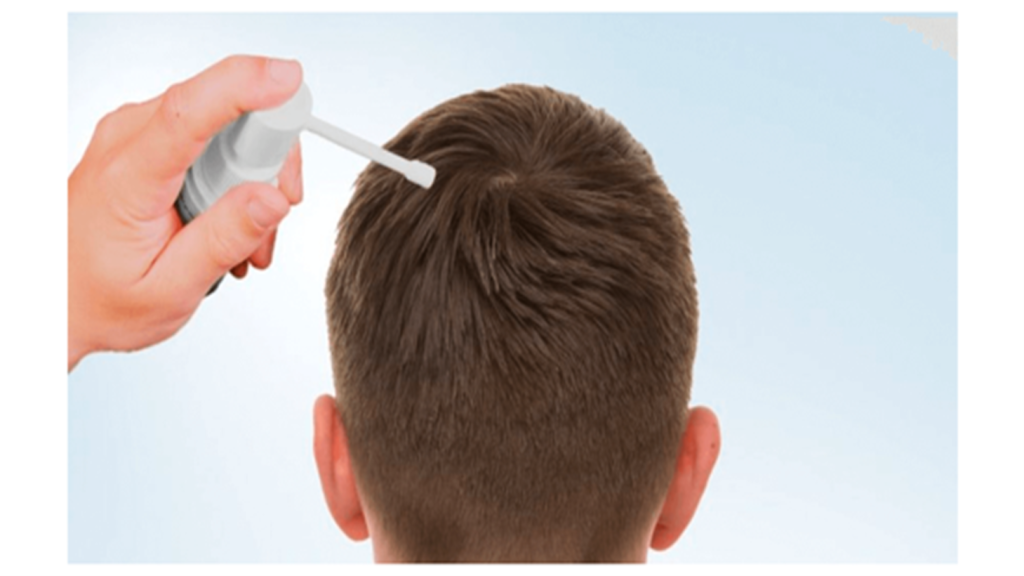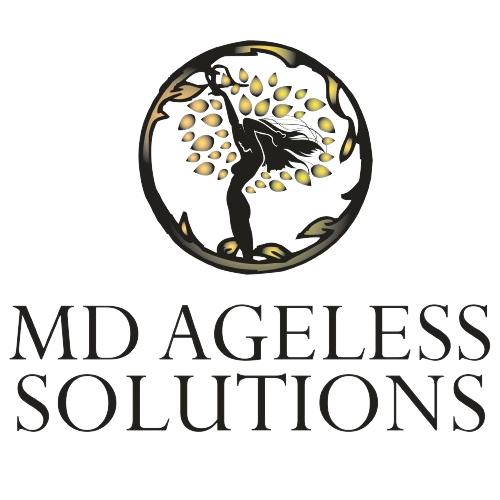Spirolactone
Topical Finasteride
Minoxidil/Latanoprost Shampoo
Rogaine, the brand name for minoxidil, was the first FDA approved medication for the treatment of hair loss. Rogaine is a topical solution that is applied directly to the scalp. It can now be purchased without a prescription and in generic formulations in concentrations of 5% (for men) and 2% (for women).


Tips On Using:
Rogaine was developed from the oral blood pressure medication minoxidil (Loniten). Minoxidil taken orally has potential serious side effects on the heart and circulatory system and is used only when other blood pressure medications have been unsuccessful. It was observed that patients who were taking minoxidil began growing body hair and it was reasoned that applying minoxidil directly to a bald scalp might cause hair to grow in this area as well. Studies showed that this was indeed the case, although the growth was generally modest.
The original studies on Rogaine were performed on the crown, so there is a misconception that it only works in this area. Although minoxidil usually works best in the crown, it also works to a lesser degree in other areas, such as the front of the scalp, as long as there is some fine (miniaturized) hair in the area. It does not work when the area is totally bald. The greatest benefit from the medication is seen from 5 months to 2 years, with a gradual decrease in effectiveness after that. Those using minoxidil long-term will continue to lose hair, but at a somewhat slower rate.
Minoxidil increases the duration of the hair follicle growth cycle (called anagen). This improves the quality of the hair by increasing the diameter and length of fine (miniaturized) hair. It can also induce a new anagen cycle to begin. Minoxidil is a direct stimulator of follicular growth (via VEGF and prostaglandin synthetase1) and also stimulates the proliferation of dermal papilla cells2. Unlike finasteride, its effects are not related to androgens. The simultaneous use of minoxidil and finasteride, which directly inhibits the formation of DHT, may have some synergistic benefit in the treatment of hair loss, although finasteride is significantly more effective.
Using Minoxidil

Minoxidil is a medication that is used to treat hair loss. To get the best results, it should be applied directly to the scalp twice a day. It’s important to apply it only to the scalp and not the hair, and only in areas where hair is thinning. If thinning is happening in the front part of the scalp, then the medication should be applied there.
There are two formulations of minoxidil: 2% and 5%. The 5% formulation is more effective, but it contains propylene glycol, which can irritate the scalp and make the hair feel sticky and difficult to manage. If this is a problem, then it’s recommended to use the 5% solution at bedtime and the 2% solution in the morning. The 2% solution is alcohol-based and less sticky.
It’s important to note that it may take 6-12 months before any results are seen. Also, the majority of people who see an effect from minoxidil will experience a decrease in the rate of hair loss, rather than new hair growth. The medication can also thicken already existing hair, but most people who see results will only grow short, thin fuzz. It will not grow new hair on a bald scalp.
Rogaine Foam is a novel form of 5% Minoxidil, incorporated in a glycerin and alcohol base. The unique foam technology offers a convenient method of delivering minoxidil to the scalp without the unpleasant, sticky, and often irritating effects of propylene glycol, the delivery compound utilized in the original 5% solution. Upon release from the canister, the product appears similar to shaving foam and quickly dissolves when it touches the skin’s temperature. Using Rogaine as a foam affords a practical means of application to the scalp, without any dripping or running down the forehead or neck, and without leaving any sticky residue in the hair.
It has been observed that using Rogaine (topical minoxidil 2% and 5%) once a day is nearly as effective as using it twice a day. This is because when minoxidil is topically applied, its half-life in the skin is 22 hours, which is much longer than its half-life of several hours when taken orally. Therefore, using it once a day is a viable option. However, it is important to note that Pfizer, the company that produces Rogaine, states that it may be less effective if used only once a day.
If minoxidil is discontinued, the effects of the drug wear off within three months and the previous pattern of hair loss resumes. When minoxidil is restarted, one generally does not regain the hair that was lost, so it is best not to stop and start the mediation, but to use it regularly.
If you looking for a hair loss solution that is both effective and convenient? Look no further than Rogaine (topical minoxidil 2% and 5%)! Recent observations suggest that using Rogaine once a day yields nearly identical results to its twice-daily administration, thanks to its prolonged half-life of 22 hours when applied topically. This means that you can enjoy the benefits of Rogaine without the hassle of twice-daily application. While Pfizer, the manufacturer of Rogaine, claims that once-daily use may lead to decreased effectiveness, the evidence suggests otherwise. Try Rogaine today and see the results for yourself!
Use in Women
It’s important to note that minoxidil should only be used in women at a concentration of 2%. This is because women are more susceptible to side effects such as hypotension, dizziness, and contact dermatitis. Additionally, using a 5% solution may increase the likelihood of these side effects occurring. One common concern for women using minoxidil is the growth of facial hair, which can be a hassle to remove. To avoid this, be sure to apply the medication carefully and avoid the temples and forehead. Remember, the growth of facial hair is usually temporary and will go away once you stop using the medication.
